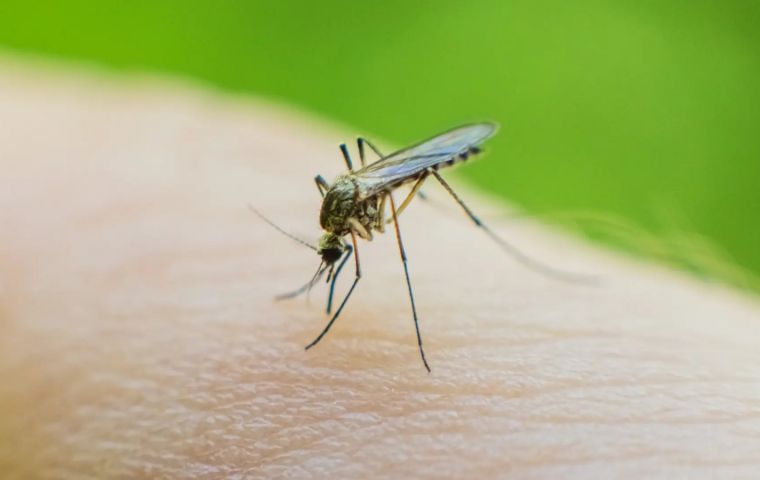MercoPress. South Atlantic News Agency
First two Oropuche fever casualties reported in Brazil
 Oropouche had never before been found to be lethal
Oropouche had never before been found to be lethal Brazilian health authorities Thursday reported the first two Oropouche fever deaths in the country and the world. The victims were two women from Bahia, aged under 30, with no comorbidities, it was also explained. The malady is said to cause symptoms similar to those of severe dengue fever.
According to the Bahia Health Department (SESAB), the first death occurred on March 27 and the second on May 10. A third death in the southern State of Santa Catarina is under investigation, while a fourth casualty in Maranhão has been ruled out for Oropouche.
In addition, 6 cases of vertical transmission from a pregnant woman to her baby are being investigated. In the meantime, federal health authorities are stepping up pregnancy controls and baby monitoring whenever the mothers have been clinically suspected of having oropouche fever.
The Health Ministry also said it was watching the illness' evolution through the National Arbovirus Room, as well as through technical visits, on-site investigations, active searches, and vector surveys to support the local response of the states and municipalities.
Starting last year, the agency has made diagnostic tests available to the national network of Central Public Health Laboratories (Lacen), which has facilitated the identification of cases outside the Northern region.
In 2024, 7,236 cases of oropouche fever were recorded in 20 Brazilian states, mostly in Amazonas and Rondônia.
Oropouche fever is a disease caused by an arbovirus (a virus transmitted by a mosquito), just like dengue, zika, and chikungunya. There are two types of oropouche fever transmission cycles. The sylvatic cycle is where animals such as sloths, monkeys, and mosquitoes host the virus. And the urban cycle, where humans are the main hosts. In all cases, the best form of prevention is to avoid mosquito bites by using repellents or clothing that covers the whole body.
Earlier this week, the Pan American Health Organization (PAHO) urged all governments in the region to increase entomological surveillance to reduce the presence of mosquitoes and other transmitting insects, while implementing preventive measures against vectors.
“It is an arbovirus belonging to the Peribunyaviridae family. It was first detected in 1955 near the Oropouche River in Trinidad, followed by several outbreaks in Brazil towards the end of the last century,” the PAHO explained.
According to the PAHO, more than 7,700 cases have been confirmed in the Americas, 6,976 of them in Brazil, the rest being in Bolivia, Peru, Cuba, and Colombia.
Symptoms of this virus ”include sudden onset of fever, headache, joint stiffness, aches and pains and, in some cases, photophobia, diplopia (double vision), nausea and persistent vomiting. Symptoms can last from five to seven days,” the PAHO also stressed.
The local subsidiary of the World Health Organization (WHO) also insisted that “all people living in areas with arbovirus transmission, including Oropouche, should take precautions to prevent mosquito and gnat bites.”
Most people infected with the Oropouche virus do not have severe symptoms and recover on their own. However, in some cases, the infection may be more serious and require medical attention.




Top Comments
Disclaimer & comment rulesCommenting for this story is now closed.
If you have a Facebook account, become a fan and comment on our Facebook Page!